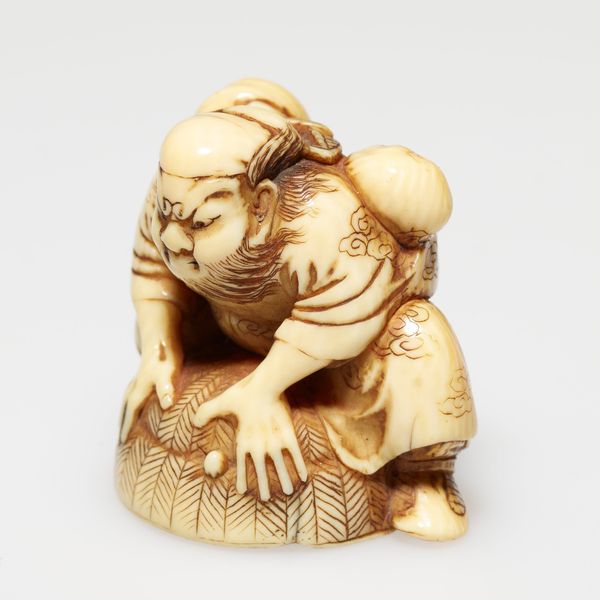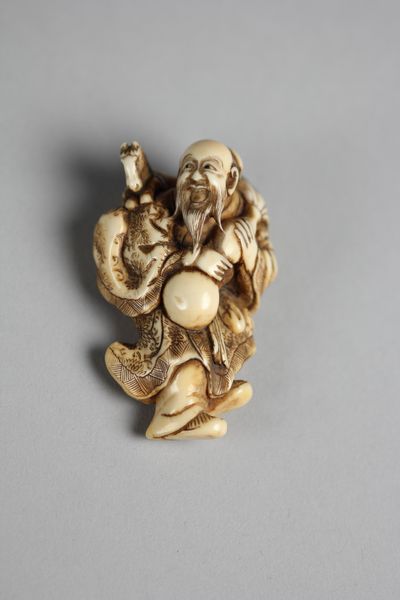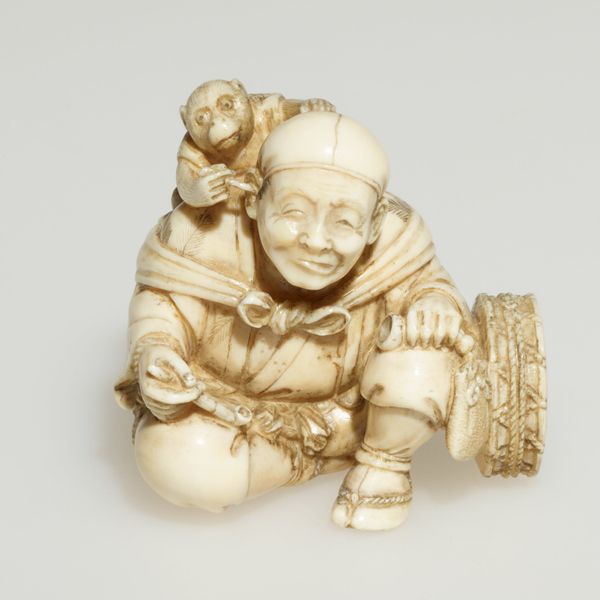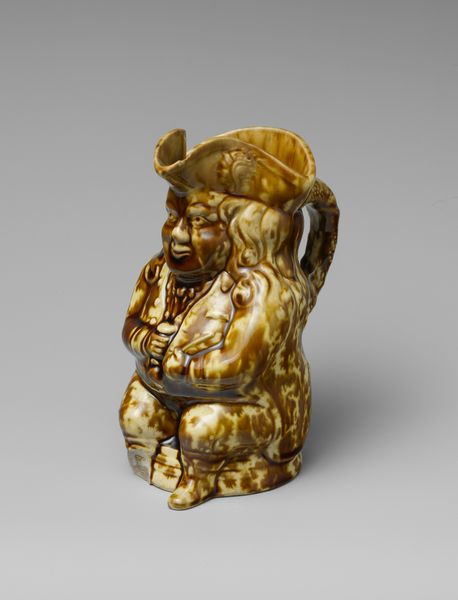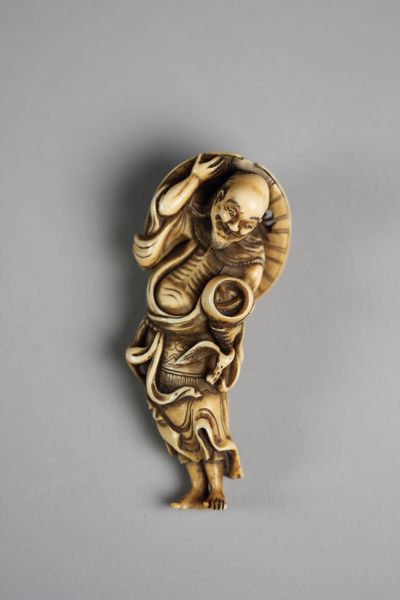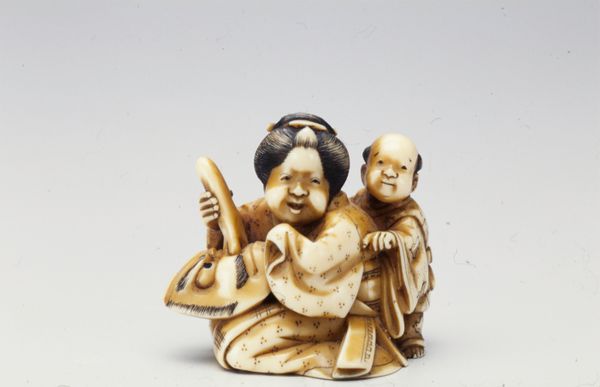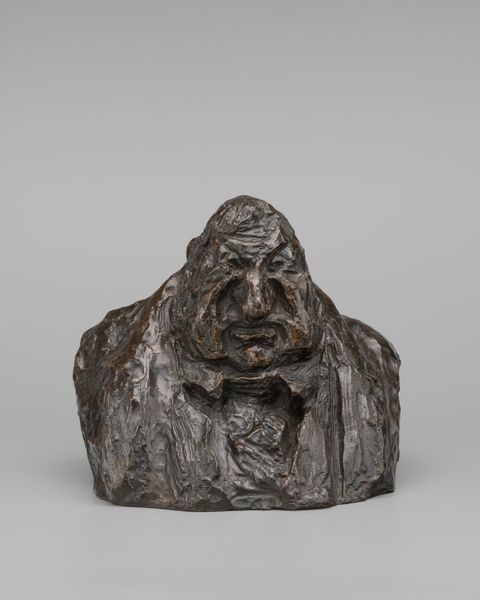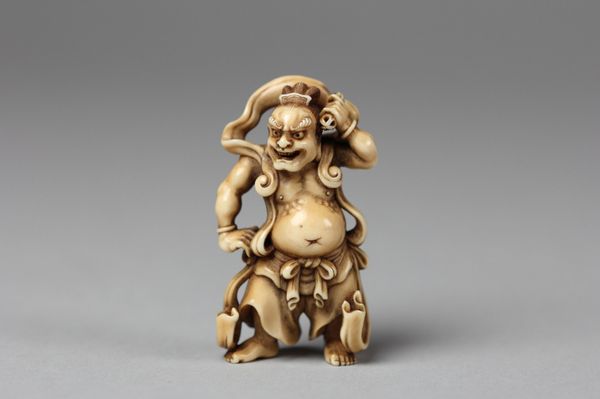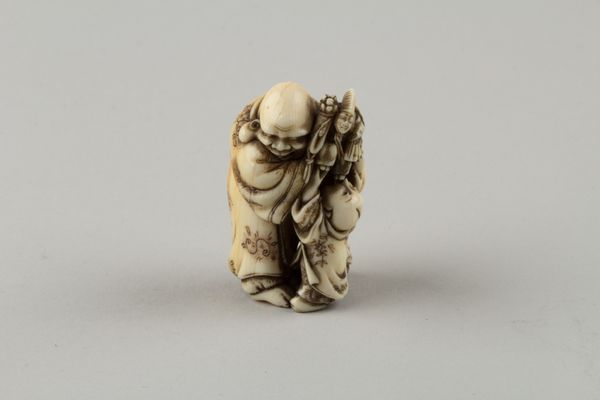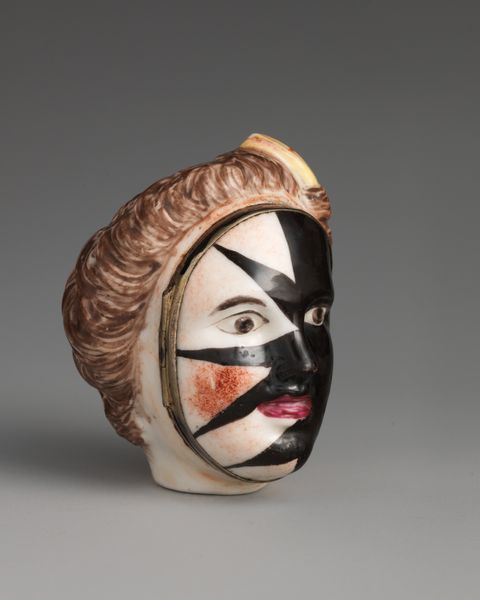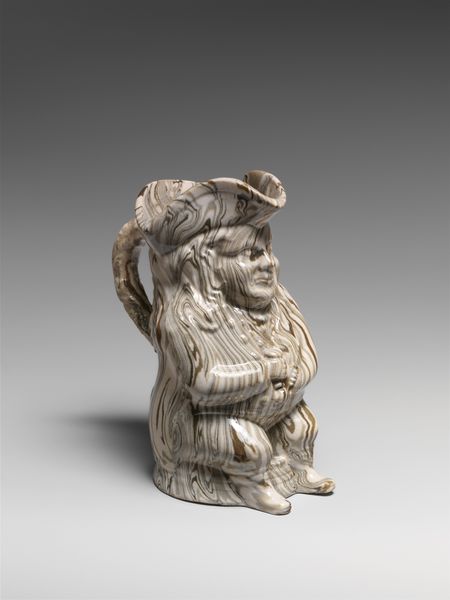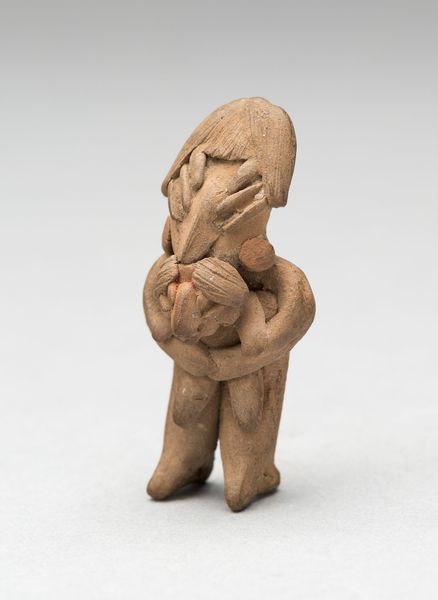
sculpture, ivory
#
sculpture
#
asian-art
#
japan
#
figuration
#
sculpture
#
ivory
Dimensions: 13/16 x 1 5/8 x 1 7/16in. (2.1 x 4.1 x 3.7cm)
Copyright: Public Domain
Editor: So this netsuke by Hakuunsai, carved around the 19th century, is currently held at the Minneapolis Institute of Art. It depicts a cluster of Noh masks. They're so detailed despite the size, but also unsettling... What cultural contexts can you unpack for us in understanding this artwork? Curator: Well, Netsuke emerged during the Edo period, with the rise of merchants and their pursuit of refined, but portable, luxury goods. How does the sculpture’s purpose – its functionality – affect its interpretation, do you think? Editor: I see what you mean. The function is more everyday rather than solely symbolic. These are ivory carvings of noh masks. How does knowing that noh drama was historically only available to upper classes changes our perception of this piece? Curator: Exactly! Now you're considering social hierarchy, not just aesthetic preference. Noh, steeped in tradition and accessible only to elite circles, makes owning miniature versions both an act of admiration, but also cultural appropriation by the rising merchant class. The detail on the mask references to complex stories available only to the most learned of the period. And the rise in this artistic production directly reflect shifts in political power away from established families. How does this inform the symbolism? Editor: So the piece shows the socio-political changes underway at the time. Even as a functional item, it carries symbolic weight regarding power, status, and cultural consumption, which is so cool. Curator: Indeed. Art acts a lens through which we can perceive these intricate social changes, captured in minute details. That netsuke condenses cultural consumption and status within early modern Japan. A humble ivory artifact reflecting immense social complexities.
Comments
No comments
Be the first to comment and join the conversation on the ultimate creative platform.

